#art making
Text
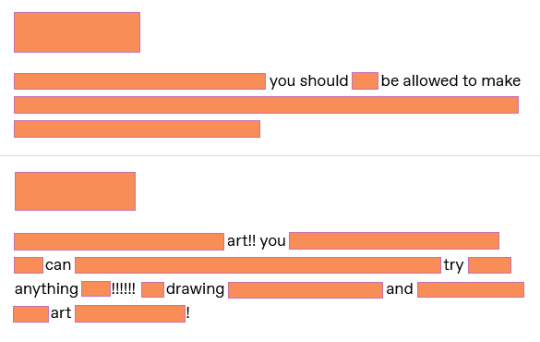
you can try anything!!!!!!
2K notes
·
View notes
Text

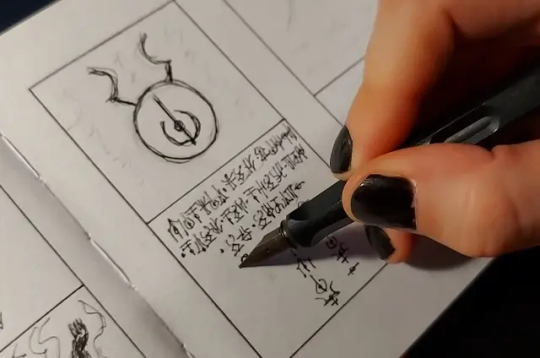

Some stills from tomorrow's video.
Make sure you're subscribed, and let us explore the shadows of the arcane.
#occult#art#magick#magic#sorcery#witchcraft#spirituality#runes#artists on tumblr#occultism#void#process#video#youtube#art making#film#linguistics#conlang
56 notes
·
View notes
Text
Hello hassel and brassius nation
They are creating art together:)
Also warm up of brassius


So very silly
#art#digital art#my art#artists on tumblr#fanart#pokemon#hassel#brassius#hassel x brassius#wtf is the ship name called#i never remember#art making#theyre creating still lifes in their respective materials
134 notes
·
View notes
Note
How do you pump out so much like high quality stuff all the time? :O
Hi Anon!
Thank you for thinking I have high quality stuff. To be honest sometimes I have no idea what I’m doing. _(:3 」∠)_
I have a bunch of WIPs that I bounce back and forth on and I use those when keeping to a schedule with publishing art more frequently.
Some pieces take years to finish (I have WIPs from 2019) while others take just a few days! I just try to post something every week if I can while in between commissions and other work.
What really helped me speed up my process is working in grayscale and then adding over flat colors (glazing)! If you’re interested in drawing check this technique out!
Thanks again and I’ll keep trying to post more consistently!
#anon response#anon reply#thank you anon#I’m just peddling my wares#ask and i shall answer#whit be quiet#art making#social media makes me stressed#but I love sharing art with y’all
31 notes
·
View notes
Text
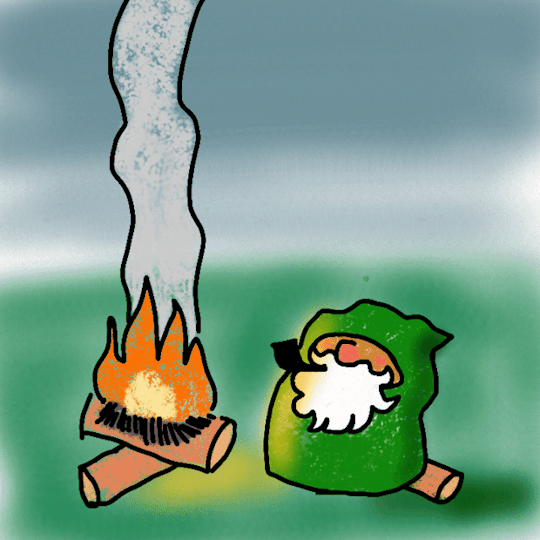
Gnome relaxing by the fire
14 notes
·
View notes
Text
"What if my art's not good enough to sell?"
(via joshyurcheart)
#closed captions#cc#art appreciation#art advice#artist advice#important#artists on tumblr#artists#art making#paintings#painters#tiktok#artists on tiktok
5 notes
·
View notes
Text
Been seeing again some younger folk online expressing their belief that if you aren't already somewhat good at art in your teenage years, it's too late to get anywhere in art making.
This was my art when I was 15/16 vs my latest piece (at 35):


Please, never be discouraged for not being as good as you want quickly.
Social media has made it seem like most people are super proficient at this right off the bat, but for many of us it's a pretty meandering road from Joe Dragon-rider-with-no-back-leg over there to being able to put what's actually in our minds in pictures
and that's ok
#life things#art making#art discourse#opinions#I wasn't very good at anatomy or perspective but at least teen me had the good taste to give dragons piercings and anime bangs
52 notes
·
View notes
Text
sometimes it infuriates me that people consider craft a hobbie that is so small and insignificant and then i remember that its Not and people do craft as a hobhy cause it makes them feel Good and they love it and it makes them feel better about their life and happiness when they are doing a little fiber craft like crochet or basket weaving and i get so unbelievable happy cause You Get It, its about tending to yourself and exploring something new and exploring yourself and its so good and im so happy people are getting sewing machines for fun and gathering 1400 knitting needles and making a mess with wet felting and i feel so affirmed in my career and my decision to Do Craft
#craft#the beauty of humans and their little fiber craft#making is so fulfilling and joyful i love it#art making#craft craft craft#fiber craft
7 notes
·
View notes
Text
Grin and Politely Wave
Grin and Politely Wave
Grin and Politely Wave, 11×14”, cut paper and ink
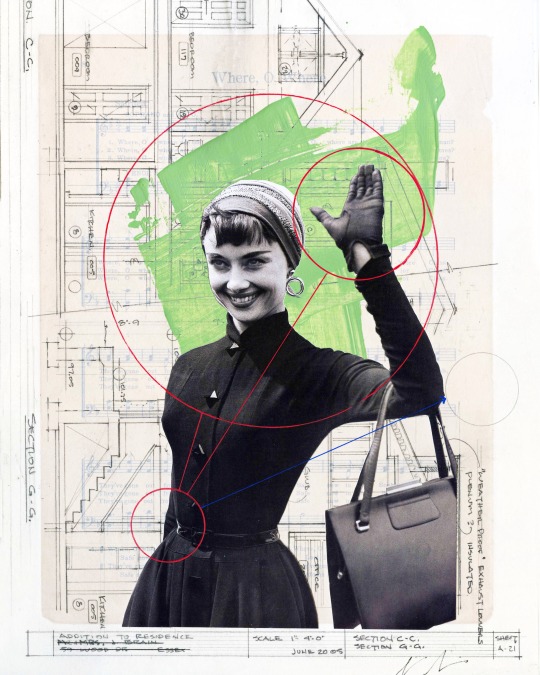
View On WordPress
#365 art#365 Art Challenge#365 Art Project#American artist#Art#art every day#art making#artist#artist practice#Boston#Boston artist#Cohasset#Cohasset artist#collage#collage art#collage artist#cut and paste#international artist#maker#mixed media#new england artist#photography#south shore artist#stephen sheffield#studio practice
4 notes
·
View notes
Text


✨The Heart✨ another 8x8. Nearly skipped this piece because the concept sketch was blah to me
(March 29, 2024)
#my art#art#artist on tumblr#expressionism#fine art#fine artist#painting#art making#art detail#art process#art wip#gif#art gif
5 notes
·
View notes
Text
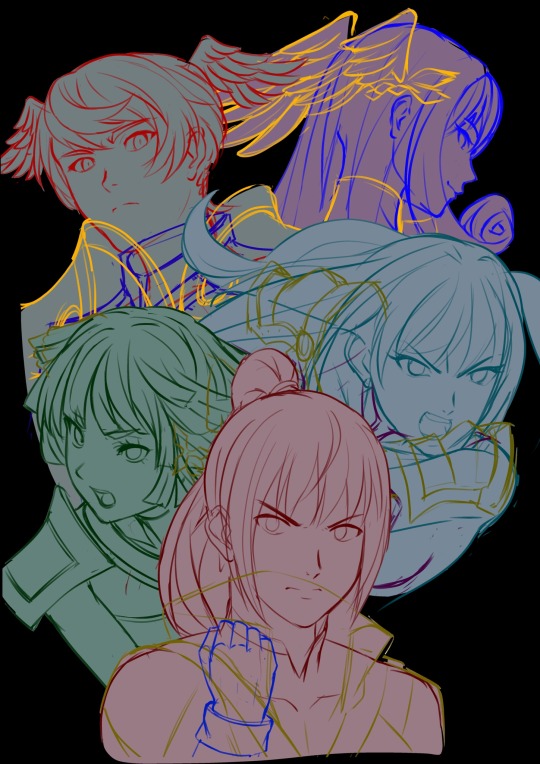
【rough】successor “Noah”
#ゼノブレイド#ゼノブレ#xenoblade#xenoblade chronicles#xenoblade 3#xenoblade chronicles 3#xenoblade chronicles fanart#rough art#art making
44 notes
·
View notes
Text
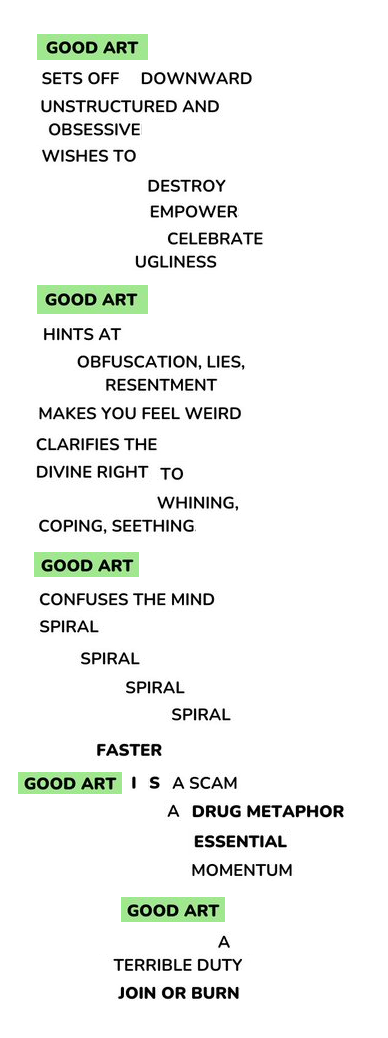
[Image description: A vocabularyclept poem. Every time the words "good art" appear, they are highlighted in green. Transcription is below.]
---
good art
sets off downward
unstructured and
obsessive
wishes to
destroy
empower
celebrate ugliness
good art
hints at obfuscation, lies,
resentment
makes you feel weird
clarifies the
divine right to
whining,
coping, seething
good art
confuses the mind
spiral
spiral
spiral
spiral
faster
good art is a scam
a drug metaphor
essential
momentum
good art
a terrible duty
join or burn
---
A vocabularyclept poem is a poem which is formed by taking the words of an existing poem and rearranging them into a new work of literature. | original post
#fixingbadposts#fixing-bad-posts#vocabularyclept poem#vocabularyclept poetry#art making#good art#abstract poetry#magnet poetry#sometimes i try to be a real blackout poet i guess#earnest fbp
2K notes
·
View notes
Text
And the lights are not fluorescent, and there are no words on the page. - Voice/Rough Draft Essay
Author's Preface and Ch. 1, 2, 3, 4, 5, 6, and 7
Description: My final portfolio for one of the creative writing courses I took based around exploring the creative nonfiction essay in its many literary forms, with any and all identifying names or signifiers censored out.
During my many travels, I have found sticking a man and his daughter in a hot car for approximately 116 miles, radio on low, murmuring music she likes and he doesn’t, homemade food in Tupperware in insulated beach bags in piles of slowly unfolding clothes in the back of the trunk, will, against or with their collective will, bring about conclusions. Asinine, podcast-y, “This action will have consequences“ conclusions. Some the father’s already decided and convinced the daughter of (and vice versa).
You’ll get them in a wide variety of (recurring) topics too! The entertainment industry, capitalism, education, and, if you, the reader, happened to be a stowaway on my last return to college, my mother’s own gradual and uncharitable concussion:
That she, at the ripe old age of 50-something, is done growing as a person.
It checked out when consulted her track record, like it was fact-checking for an intervention: Her slow-roasted resentment in my grandmother’s miserly recognition of her overwhelming lifelong achievements (and, subsequently, her brother for slurping up all the motherly attention grandma served up, like the part eched little thing he was), barely abated by her (1) confrontation of my grandmother’s behavior. The following mourning period, shared with me and my father for two months at best. Her go-to apology: “I guess I’m a bad person then!” said in the most patronizing voice she could muster (and believe me when I say she has plenty of experience).
My mother is a firecracker more than she is a woman, raw, rich personality stuffed inside what looks like Barbie-laminated plastic, engineered at initial creation to shoot off into the sky quicker than the strike of a match. To burn out, quietly, like the star that she is, following the promise of a thunderous boom. A great disappointment you only understand in adulthood.
Of course she saw life, her life, as just sorta…like that. Nothing to be done about it, you could figure she figured. Best to hang that soggy pit of sadness on the coat rack and hope to god it dries in time for work tomorrow.
I wasn’t grown up though, despite my age of 20 whole years. At least, not enough to understand how anyone else could think like that. Could find something tucked away in the recess of their life that just wasn’t quite right, and go “...Mmmm that should be good enough.” The best explanation, the one meant for someone so young and hopeful in their delusions, was found in the very first conclusion I managed to bulldoze my father into coming to that evening: Ever since man first inhaled the emancipating power of creativity and survived the exhale, there has been art born out of someone, somewhere, going “...Well, it looks like the picture in the book”, and calling it a night.
You may be surprised to hear this, considering this little article of mine is (arguably) fairly coherent and, at the very least, not actively killing your brain cells, but my favorite television show of all time is one of the laziest, thoughtless, and most exhaustive pieces of media 14-year-old me had ever seen in her measly little life. It was a 15-minute serialized animated cartoon named Breadwinners running on Nickelodeon's spinoff channel, Nicktoons, at the time, aired only two seasons, and if you value your time and self-respect, you will not watch it. All you need to know about the show is the words of its co-“creator” (the term, of course, used in the most ambiguous sense possible, within the confines of human minds) Gary Di Raffaele on his and Steve Boris shared writing process: “I think, when you watch a Breadwinners episode, it feels and it sounds like no other cartoon because it’s, it’s got that, that constant drive, that constant beat.“ (“Meet The Creators”), an unofficial elaboration on the previous statement, “The way we produce our show is pretty much unlike anything else that’s been produced.” (“Meet The Creators”).
What follows these sentiments are only a few more words on the animation process and the collaborative angle the show’s crew takes, but Gary’s tone (and the show itself) is so clear and obvious that the second part of that sentence, I feel, can barely be classified as an inference. “Unlike anything else that’s been produced”, because that’s what makes the show so unique, so fun and wacky and zany!
So good.
The filming of this interview (with the help of fevered, extensive consumption of both every decent video essay critiquing this show and every episode of the show I’ve gotten my hands on) has only confirmed my suspicions. Sometime after the greenlighting of their pilot and the subsequent order of a first season, Raffaele and Boris had come to the reasonable observation that one of the many redeeming qualities used to defend a show’s quality is its supposed uniqueness, its fresh ideas or concepts. Even its ability to introduce familiar archetypes and plotlines and tropes in a new and exciting way, or with a twist or subversion of sorts! They then, despite now having contact with at least a few of Nickelodeon's experienced and accomplished writers now within contact, stumbled down one of the many historic writing pitfalls of overeager amateurs and seasoned veterans who have lost their touch over time: The assumption that because their writing looks like some of the quality art they’ve seen before, it simply must be of just as high a quality.
This artistically stunting philosophy grows in many familiar places, the way mold grows on trash bins left on the curb on a hot summer Tuesday. You may find it in the 12-year-old who is just beginning to explore their artistic capabilities by tracing screenshots of anime characters they found online, or the burned-out cartoon writer, a fast-approaching deadline for the shipment of an episode’s storyboard hanging over their head, and a hastily downed Starbucks coffee hanging off the side of their desk. You may even find it trapped within the inner workings of your own creative work (though I do hope you never do). Either way, you will find the same outcome in every new example you find yourself confronted with:
The writer eventually mistakes their work’s resemblance to the type of art they aim to recreate, whether that be in the way said example tugs at the heartstrings or gets its viewer’s blood pumping, for proof that their work accomplishes these feats too, simply due to its traceable proximity to its inspiration.
The stand-up comic throws in jokes that don’t land because they have identifiable setups and punchlines, the romance novelist adds a sex scene even when it grinds the plot to an unnecessary halt because her favorite book has one too, and the writers behind Breadwinners use an inventive new production strategy to make the zaniest, off-the-wall scripts their network had ever seen, in hopes they would help the show stand out amongst all the other wacky competition in each week’s programming block and ensure each episode shocks and surprises 9-12 year olds everywhere. That Breadwinners would be innovative, eye-catching, and above all else, unique.
This inherent “uniqueness”, of course, was presumed to come neatly prepackaged with the intended goal of their solely comedy-focused cartoon: Making the viewer laugh. In any way possible. If you’ve ever seen an episode of Breadwinners, you know fully well that it did not.
“But [REDACTED],” You cry. “Haven’t you ever written something in the style of the things you like? Who are you to judge?” Normally, I would recount the “Appeal to Hypocrisy” fallacy in detail, but this article is already long enough (I would also question why you are talking to an online article as if it can hear you, but I digress). I will instead surrender my own early work, “Body Swichers” (I invite you to ignore the spelling, if you can), as tribute, and instead call your attention to this excerpt from a twelve-year-old me with a cliche plot line and far-too-early access to Microsoft Word: “Instead of the cheerful, spike-haired boy, he saw his sarcastic, witty friend, Gretchen in the mirror…Megee raced toured the closet and pulled out an antique, dusty, enormous book.” (Sacristan 1)
Notably bad grammar and sentence structure aside, this quote is a direct result of my ongoing journey as a writer. The first thing I had ever written, the first chapter of a romance/adventure story, was an attempt to recreate the magic I’d found in the many, many novels I had gotten lost in as a child. It was, predictably, not successful. Every line held the bland and awkward hallmarks of a child’s first draft, despite both my parents’ insistence on how it didn’t. Instead of falling back on the idea that it was good by virtue of it sharing an intended style with works I had deemed good, however, I opened up my laptop a few weeks later, pulled up Internet Explorer, and set out to find why that chapter didn’t intrigue me as much as the writing in my favorite series.
This process soon led to the discovery that the books I liked had big, descriptive words in them, words like “sarcastic” and “antique” and “enormous”. The incorporation of these words in my next work led to the question of why everything I wrote sounded so clunky and redundant all of a sudden, which led to learning about effective word choice, and then good sentence structure, and then impactful tone and atmosphere, and countless other improvements! Most importantly, however, is how it highlights the difference between my approach and Boris and Raffaele, despite still sitting at an amateurish level myself.
They took inspiration thinking it would ensure quality work, to somehow magically copy and paste its greatness into their own writing. I took inspiration to learn what made it so great in the first place.
So, there. That, I figure, is how someone could look at something in their life, whether it be art, a personal flaw, or even their entire self, and assume it resembles what it's supposed to look like well enough to “pass”, whatever in god’s name that’s supposed to mean. (One way, at least.) And I’m sure this theory could apply to other aspects of issues I’ve touched upon in this article. The dire need to push yourself as a writer and avoiding the comfort of creative complacency in your work, the way this type of thinking directly informs the prevailing disrespect children’s television writers holding in their audience, mistranslating “silly and childish” as “good enough for kids”, even how that reflects a wider disrespect for children in society as a whole!
I hope, however, the single grain of wisdom you and I both take away from this literary exploration is the same one I found detailed in Stephen King’s autobiography, On Writing, in his mother’s disappointment upon realizing that that the little hand-drawn comics he’d been showing her were direct tracings of someone else’s work. IN the novel, she dismisses the original works, citing them as “junk” and insisting that she “...’bet you [he] could do better. Write one of your own.’” (King 28)
Can you imagine, truly, if King (a young child who’d never written an actual story in his whole life and could have very easily done so!) had disregarded his mother’s advice under the guise that nothing could be better than something identical to one of his favorite things to read, that drawing something that looks like them was good enough on its own? If we were forced to live in a world where this advice didn’t lead him to publish so many of the literary classics we know and love today, like “It”, or “Carrie”, or “The Outsider”?…I can’t, since I haven’t actually read any of his books, but this world has been gracious enough to let me bear witness to Carrie (1976), the Carrie musical’s off-broadway cast album, and some of the loveliest It fanart I’ve ever seen, So I imagine that world, in the kindest of words, totally blows. It stands to reason, then, that we, as writers, have a creative duty to keep growing and improving both ourselves and our work, to make sure we never come to see it.
#creative nonfiction#essay#creative process#art#breadwinners#stephen king#carrie#carrie the musical#fandom#writing process#understanding#literacy#essay writing#art making#creative writing#creating art#car ride#hot take#passionate#creativity#imitation#nonfiction#writing
2 notes
·
View notes
Text
Dinocar is live for Zine Month 2023!

Some weeks ago we were approached to participate in Crowdfundr's Tabletop Nonstop event in support of creators for Zine Month 2023. Since we're *very* open to trying any alternative to Kickstarter we decided to give it a shot.
TODAY, on February 1st 2023 our crowdfunding campaign went live!
We're honored to have Jess Kuczynski work on another cover for us (You might recognize his style on Kitchen Knightmares!) and to be able to invite some guest dino artists: Viditya Voleti, Korben Dennis, and James Docherty!
How do you DINOCAR?

Dinocar isn't just a tabletop role-playing game, it's also an art-making game for people of all ages! Play is split into a few phases that you can read more about in our twitter thread.
#zimo23#beggartok#ttrpgs#indie ttrpgs#dinosaurs#dinos driving cars#indie#ttrpg#art game#map game#map making#art making#all ages#family friendly
13 notes
·
View notes
Note
I’m struggling really hard with finding my own art style, do you have any hacks to help me with this? And btw your art AmAzInG💞
Hi! Thank you for the message!
I would definitely say that repetition is going to be your best asset if you want to develop your own style. Draw the same thing over and over until you can draw it in your sleep. That, and venturing away from reference images. Use your memory of what things look like rather than leaning on references for support. References are incredibly helpful! But being too reliant on them takes away from the fluidity of the objects existence on paper, versus how it exists in reality. Practice lines, and also get in tune with how certain lines make you feel, or how certain combinations of paint and brush stroke make you the most happy. Be in tune with what specific parts of art spark the most joy in you when you do them, and then do them over and over and over. And you'll emerge on the other side of that with a unique style that no one else will be able to replicate.
Also, don't take it too seriously! Developing a style is going to require a ton of mistakes and things you don't like. You're going to throw a lot of drawing in the trash, and thats okay. Just keep going.
5 notes
·
View notes
Text
I just watched for the second time Super eyepatchwolf's video on influencers courses to became YouTube famous.
This time I decided to read the comments. I came across a comment quoting SEW with statement going something like that ""There is nothing wrong with you if other people don't pay attention to your art. That art is for you That is enough. I promise." -Super Eyepatch Wolf".
This simple comment sparked huge discussion in replies. While some agreed with the sentiment others went on a bittersweet tirade that all that publishing their videos for themselves did is made them nervous. What really made them happy was comments and engagement from watchers. That saying that you only need to make art for yourself is a privileged position from those who made it.
It's hard not to empathize with this sentiment.
Especially as someone who has been publishing stuff on the internet for around 9 years now with little to no success. My most successful venture was a webcomic that gathered 2k followers.
Yet, with all that said, with all that empathy, I think that those people are missing the point. What this comment was trying to say is that if you need validation to make your art then there is very little chance of you not burning out and in the end succiding.
After nine years I still feel disappointment if I didn't gather any attention with my artistic ventures, it won't stop me tho, and I really hope it won't stop you.
Before mentioned video:
https://youtu.be/c3xSJuoUnN8

#super eyepatch wolf#art making#social media#youtube#art promotion#monetisation#artistsupport#kinda depressing#on the internet#no one hears your scream
3 notes
·
View notes